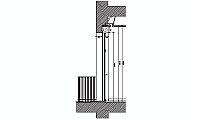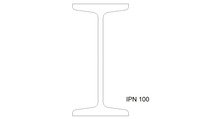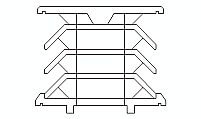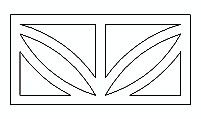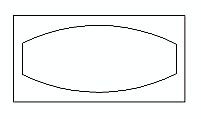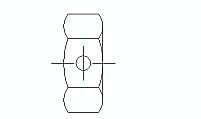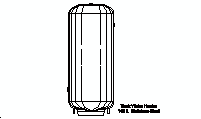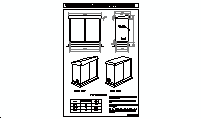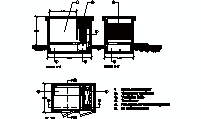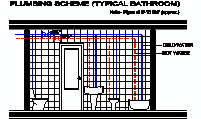CAD Blocks categories
 3D models
3D models home furniture
home furniture sanitary ware - bathrooms
sanitary ware - bathrooms professional equipment
professional equipment doors and windows
doors and windows people and animals
people and animals plants and trees
plants and trees vehicles - transports
vehicles - transports architectural details
architectural details mechanical - electrical
mechanical - electrical urban planning - civil works
urban planning - civil works safety health construction
safety health construction accessible design
accessible design drawing sheet
drawing sheet signals
signals construction machinery
construction machinery accessories and objects
accessories and objects maps and street maps
maps and street maps
Plastic Wall Plug - DWG CAD Drawing

size: 5 kb
category: architectural details
related categories:
description: Front view CAD representation of a plastic wall plug, featuring ribbed expansion zones for secure anchoring in masonry and other surfaces.
file extension: .dwg CAD - AutoCAD software
Everything You Need to Know About Plastic Wall Plugs
Design and Functionality of Plastic Wall Plugs
Plastic wall plugs, commonly referred to as rawl plugs or expansion plugs, are essential for securely anchoring screws in porous or brittle materials. The plug shown in the image features a ribbed design for effective expansion within a pre-drilled hole, ensuring a firm grip in masonry, concrete, and drywall.
These plugs are often used in residential and commercial construction for hanging shelves, mirrors, light fixtures, and other medium-weight installations. Their design allows for the even distribution of force, reducing the risk of cracking or damage to the substrate during installation.
Standard Sizes, Load Capacities, and Compatible Screws
Plastic wall plugs come in a range of sizes, typically indicated by color coding. For example:
- Yellow: For screws of 3-4.5 mm diameter; requires a 5 mm hole.
- Red: For screws of 4-6 mm diameter; requires a 6 mm hole.
- Brown: For screws of 5-8 mm diameter; requires a 7 mm hole.
- Blue: For screws of 6-10 mm diameter; requires a 10 mm hole.
Load capacities vary depending on the material and size of the plug. For example, a medium-sized plug can support up to 50 lbs (22.7 kg) in concrete or masonry. Compatible screws should match the plug diameter and have a threaded profile for secure engagement.
Materials and Manufacturing Standards
Plastic wall plugs are primarily made from polyethylene (PE) or nylon (PA6). Nylon plugs offer superior durability, flexibility, and resistance to environmental factors such as moisture and UV exposure, making them suitable for outdoor use. Polyethylene plugs are more affordable and sufficient for light-duty indoor applications.
Manufacturing standards, such as ISO 898-1 and region-specific guidelines, ensure consistent quality and performance. Compliance with these standards guarantees that the plugs meet the load requirements and safety standards for various applications.
Advantages and Disadvantages of Plastic Wall Plugs
Advantages:
- Lightweight and easy to install.
- Compatible with various surfaces, including concrete, brick, and drywall.
- Non-corrosive and resistant to environmental degradation.
- Available in a wide range of sizes for different applications.
Disadvantages:
- Not suitable for heavy loads or structural applications.
- Performance can degrade under extreme temperatures or prolonged UV exposure.
- Requires precise drilling for proper installation.
Evolution and Global Applications
Plastic wall plugs were developed in the mid-20th century as a versatile alternative to traditional metal anchors. Their lightweight design and ease of installation quickly made them a staple in construction and DIY projects worldwide.
In the United States, these plugs are commonly used for residential installations, while in Europe and Asia, they are integral to both light and medium construction tasks. Japanese manufacturers often produce high-precision plugs designed for unique architectural materials, emphasizing compatibility and reliability in various applications.



